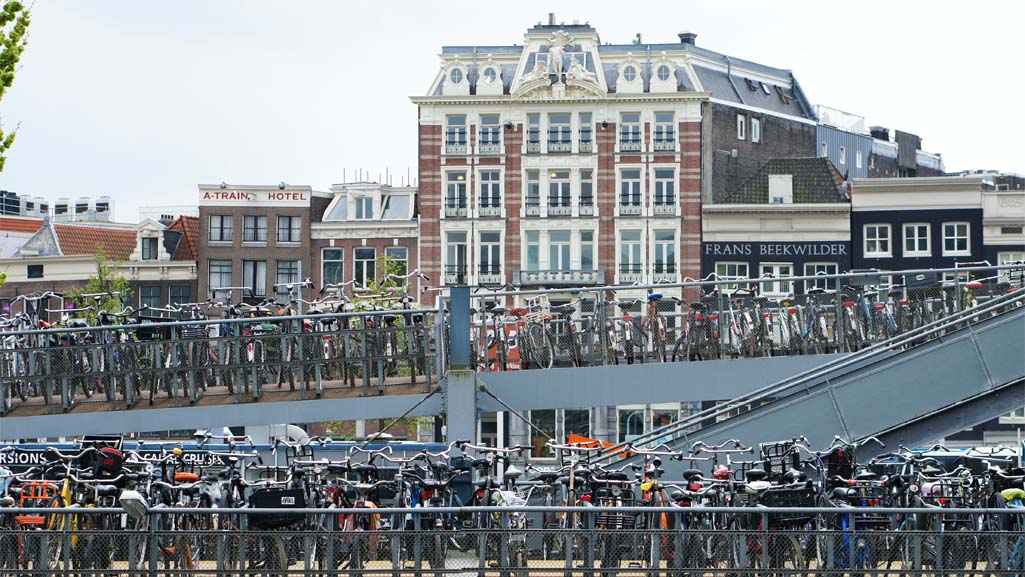The bicycle is seen as one of the key components for a green change in mobility, especially in urban areas. To encourage more people to cycle a safe and attractive infrastructure is a essential. A new international project now maps cycling safety in five cities around the word to better understand infrastructure risks. We talked to Monica Olyslagers from the International Road Assessment Programme (iRAP) and Sofia Salek de Braun, Road Safety Ambassador at PTV Group about it.
Why does bicycle safety play such a big role for the green change in mobility?
Sofia: “The bicycle stands for modern climate-friendly mobility. It’s efficient, ecofriendly, affordable, and healthy. But unfortunately, cyclists are exposed to high risks, which is holding people back from using it as an alternative means of transport. The infrastructure must change, because we will not succeed in changing mobility behaviors if streets continue to be dangerous, and people are killed or seriously injured. This is why we at PTV Group warmly embrace the new project cooperation with iRAP, Fundación MAPFRE and the Union Cycliste Internationale to address bicycle safety.
For this new project, the evidence-based infrastructure risk evaluation model CycleRAP will now be used in five pilot cities, namely Madrid and Barcelona, Spain, Bogota, Colombia, São Paulo, Brazil and Fayetteville, USA. Can you please introduce CycleRAP to our readers?
Monica: We officially launched CycleRAP last year at the Velo-City Conference in Ljubljana, Slovenia and in Latin America at the ITF Safer City Streets Network event in Guadalajara, Mexico. It is a risk evaluation model specifically for light mobility, such as bicyclists, e-bikers, scooters and so on. The model is used to identify high-risk locations based on the infrastructure features of a road, street or path. This allows cities to address dangerous locations without actual crash data and suggests and prioritizes what safety treatments are needed. It doesn’t just consider the risk of crashes with vehicles. It also evaluates the risk of conflicts with other forms of light mobility, pedestrians or crashes not involving other vehicles or pedestrians. CycleRAP is based on studies into light mobility crashes from around the world, and it is designed to be used globally.
What will happen now in the pilot regions?
Monica: In each of the pilot locations, local partners are identifying what roads, streets or paths to assess. This depends largely on what issues they want to address, such as improving safety for commuters or around schools, addressing specific known issues or where upgrades to existing facilities are being planned. Video imagery and vehicle speed and flow data for these facilities are also being collected to be able to run the model. Then, results will be presented in maps showing how safe the infrastructure is for cyclists and users of other types of mobility vehicles using the facilities and providing cities with a prioritized safety treatment plan. It is the first time the model will be applied outside of Europe.
What is the aim in the different cities?
Monica: There are no global standards for cycling infrastructure. Cities have very unique characteristics in how their infrastructure is designed, the rates of use of light mobility and the types of light mobility vehicles being used. Many cities have also experienced very significant changes in recent years. Some of this has resulted from policies which promote active and sustainable modes. Others occurred more spontaneously in response to the pandemic and rising energy prices.
The aim is ultimately the same for all five pilot locations: to improve infrastructure safety for bicycling and light mobility. By undertaking the pilots in various locations, we can demonstrate how the model can be applied in different environments and meet a range of specific local needs and objectives.
What is the role of PTV?
Sofia: PTV will work with one of the pilot cities on the visualization of the CycleRAP model results and evaluate infrastructure improvements. Our team will generate a supply traffic model of the city based on our latest technology PTV Model2Go and OpenStreetMap data for a detailed urban bicycle network configuration. The CycleRAP analysis will then be applied in the multimodal network and analysis platform, PTV Visum, which will allow us to manage, calculate, and visualize bicycling corridor safety analysis.
And what is the overall aim of the project?
Monica: While we were working to develop CycleRAP, we received a large amount of interest from around the world from cities and others in the tool. There is a distinct gap in tools, data and other resources available which help cities respond to demand, isolate and address cycling network issues, or even know where to start. CycleRAP aims to support cities in understanding the infrastructure risk for cyclists and light mobility users and provide recommendations to make the infrastructure safe. This project helps achieve this aim by showcasing best practices to the world through a series of case studies and guides to support other cities in using CycleRAP. Their project will also use the CycleRAP analysis of different types of cycling facilities and designs to help other cities to make their cycling networks safer.
When are the first results expected?
Monica: The project results are due in October 2023. City-specific reports will give cities insights into the safety of their facilities and provide safety recommendations to help reduce high-risk locations. A knowledge base to help other cities replicate the approaches and improve the safety of their cycling infrastructure will be launched publicly at the UCI Mobility and Bike City Forum on 25-26 October 2023 in Bruges, Belgium.



